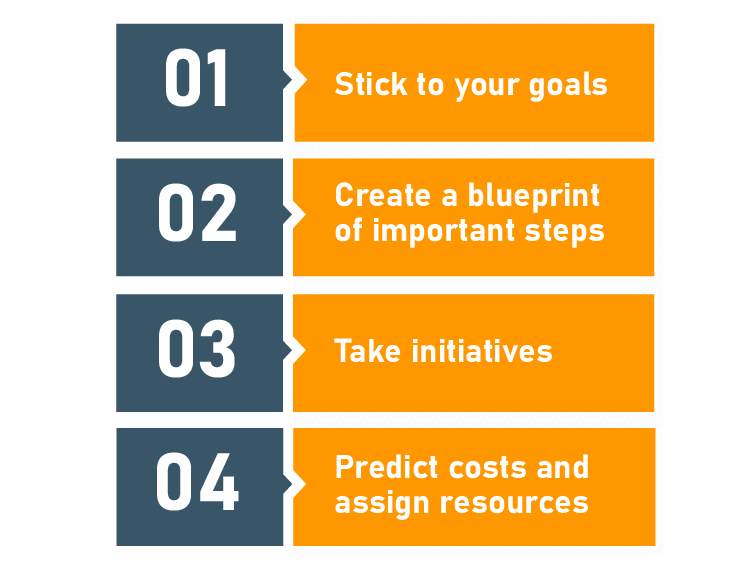Do you want to attract and retain customers? A strategic marketing process could be the key to achieving both these goals.
It makes all the difference in customer retention and directs how effectively you communicate with your customers and keep them engaged. That’s because a well-researched and tactically built marketing process can turn your targeted leads into loyal customers.
Having a strategic marketing process in place also helps you set measurable goals, minimize risks, track progress, and make necessary adjustments.
But what exactly is the strategic marketing process, and how do you implement it? Let’s dive into this blog to explore its meaning and execution.
What is a strategic marketing process?
A strategic marketing process can be defined as a systematic and detailed approach that organizations use to achieve their marketing goals by understanding customer needs, defining objectives, creating strategies, and aligning marketing efforts with overall business goals to drive growth and profitability.
How to create a strategic marketing process?
Creating a strategic marketing process is similar to creating your business plan. It begins with stating your objectives and defining goals.
Furthermore, it involves analyzing your market, identifying your customers’ requirements, and developing a set of marketing tactics that work for your target market.
There are five major steps involved in a strategic marketing process:
1. State the mission of your company
Before we begin developing a marketing process, it is essential to identify and define the mission statement of your company. It explains the purpose of your business and how it helps your target customers.
Here, you also mention your company’s value proportions, goals, and objectives.
Value proposition
Value proportion states why someone should buy your product and defines the value it adds to them if they do purchase. A mission statement will touch upon the benefits the customers get from your business, and here, you elaborate it even further.
In short, it should clearly state why you should be chosen over your competition. This is the point around which your marketing process will revolve.
Objectives and goals
In this section, list your company’s objectives and goals. Objectives include your tasks and the techniques you are using to complete them effectively. Also, mention the goals you aim to achieve through the objectives.
Create winning strategic plans with our
AI Business Plan Generator
Plans starting from $14/month

2. Analyze your market
The second step is to analyze your market. This analysis will give you a clear view of the market and help you understand your strengths, weaknesses, and assist you in developing protective measures.
If you need to conduct market analysis, here’s how to start:
Study your industry
First, understand the marketplace completely. This is essential to recognize all the areas of your industry and take advantage of them.
Also, understand the industry trends, growth projections, and the magnitude of your industry. This will also help you understand the competition you will be facing and the advantages you have over them.
Define your market
Now, identify your target audience and specify their values, needs, expectations, and lifestyle. Then, test your observations with your target customers.
Knowing your competition is key! See what they offer and how they solve problems. This helps you improve your services and stand out to grab more clients.
Conduct a SWOT analysis
Here, you will undertake a SWOT analysis of your business including your strengths, weaknesses, opportunities, and threats. Detect the opportunities and threats in your industry and specify how you will exploit and tackle them.
Explain the advantages you possess and discuss if you can use them to balance out your weaknesses. Also, explore your business’s threats and develop a fool-proof strategy to be successful.
3. Devise a marketing plan
 Now that you know your ideal customer and what your competition offers, plan how to reach them! Create detailed customer profiles and specify their needs better. This will help you tailor your marketing campaigns and efforts to benefit your customers truly.
Now that you know your ideal customer and what your competition offers, plan how to reach them! Create detailed customer profiles and specify their needs better. This will help you tailor your marketing campaigns and efforts to benefit your customers truly.
Goals and metrics
Before you start making a marketing plan, knowing what you want to achieve is important. Setting SMART goals (Specific, Measurable, Achievable, Relevant, and Time-bound) that make sense and have a deadline is the first step to doing well. If you set the wrong goals, your business might fail before you even get going.
To make sure you reach your goals, make a plan that shows what you need to do. This plan should cover how you’ll market your product and build your brand, among other things.
Goals don’t mean much unless you can measure them and use the results to make decisions. So, it’s important to use measurements that make sense for your business. The commonly used key performance indicators are sales, profit, product performance, etc.
Create a budget
The next thing after specifying goals is creating a marketing budget that works for you. Budget is one of the most powerful tools businesses have to predict and control your cash flow.
Here, you allocate resources to propel your marketing planning process. Predict costs and assign resources to various tasks like advertisements, branding, social media marketing, and more.
4. Customize a marketing mix
After developing a marketing plan, let’s move on to creating a marketing mix. This is a commonly used marketing strategy tool, which involves four main tactics called the 4Ps. The marketing mix Ps’ are:
Product
Here, you mention the features, dimensions, material, durability, and other details of your product. The purpose here is to communicate what exactly is the product that you are selling to the customer.
Price
In this part of your marketing process, you mention the price of your product. The pricing depends on a lot of factors. Ideally, it’s a balance between your budget and the perceived value of your product in the eyes of the customer.
The right price is low enough that there will be demand for your product and high enough that it can earn you good profits. This will require intense consumer demand forecasting, market research, and consistent customer feedback.
Promotion
Now, define and list the promotional channels through which you want to market your product. Think about how and when you will promote your product or services. These can include TV ads, social media marketing, Pay-per-click ads, billboards, etc.
Place
Now comes the part where you decide how to sell your product to your target audience. Depending on your customer preference and your prospects of profit, you decide if you want to sell online or offline, or even both. State the distributive channels and supply chains you’re associated with. Also, mention the location of your business if you are going to sell your products offline.
5. Implement, improvise, and iterate
So far, you have stated your mission statement, done your market analysis, devised a marketing plan, and customized your marketing mix. Now, it’s time to put your strategic planning together and launch your marketing strategy process.
Finalize the ‘when’ and ‘how’ of your launch. This is the step where you need to start taking notes of what’s working for you and what’s not so that you can go back to the planning phase and make changes.
A strategic marketing process is dynamic and can be revised multiple times, whenever required. This helps you reposition yourself and adapt to the ever-changing business environment.
Tips for an effective strategic marketing process
An effective strategic marketing will deliver high-value solutions to the target audience. This approach allows the marketing team with clear goals and direction, ensuring that resources are used efficiently. Here are a few tips for the marketing process:
- Set clear specific, measurable, achievable, relevant, and time-bound (SMART) to stay focused and track progress effectively.
- Conduct market research to understand your target audience, competitors, and industry trends. This will help you make informed decisions at each step of the business.
- Identify the unique selling proposition of your product and services that sets you apart from the competition.
- Make sure your business plans and goals are flexible enough that you can alter them whenever there is any change, even after the development phase.
- Don’t be afraid of testing new strategies and channels, as it will help you learn what is working and what is not.
- Select the right KPIs for your marketing goals and track them regularly. Use data analytics to identify trends, measure campaign success, and optimize your strategies in real time.
Now, that you know exactly what to keep in mind while creating the planning strategic marketing, let us see what all things you need to avoid.
Common strategic marketing process pitfalls
While you are aiming to create the perfect strategic marketing, certain common problems might arise. Here are some of the issues you should avoid while preparing your marketing strategies:
Lack of clear objectives
Clear objectives determine the destiny of your marketing plan. Without them, your business might lose its direction and fail to deliver results. This way businesses increase the risk of wasting resources on activities that do not match the long-term goals.
Poor assumptions
Assuming anything without proper validation can lead to the failure of critical business strategies. Assumptions like customer needs, availability of skilled employees, channel preference of consumers, or pricing points, should be made with facts and statistics. It’s important to validate these assumptions through research and data analysis to ensure your marketing efforts are relevant.
Failing to understand customers
Not understanding the target audience might lead to ineffective messaging and communication because the content might not resonate with the market’s needs and pain points.
Along with taking care of the customers’ needs, market segmentation is also necessary. Without segmentation, businesses risk adopting a one-size-fits-all approach that fails to resonate with any particular market segment. This can lead to generic and less impactful marketing efforts that fail to generate the desired results.
Inability to adapt
Markets are dynamic, and strategies that work today may not be effective tomorrow. Failing to adapt to changing market conditions, consumer behavior, or technological advancements can result in missed opportunities and loss of competitiveness.
So, adapting strategic business planning according to the current market trends and competitors is necessary.
Lack of resources
Insufficient resources, like underfunding, can quickly disturb a marketing plan. It’s important to be realistic about your goals and not aim too high. Determine all the internal or external resources you need for each step, and manage your content marketing efforts carefully.
Conclusion
The strategic marketing process is crucial to support businesses in achieving their marketing objectives efficiently.
Remember strategic marketing is a continuous process. Therefore, it is necessary to continually assess and adapt strategies to keep up with changing market trends and consumer preferences.
Adopting a strategic marketing process empowers businesses to make informed decisions, stay ahead of the competition, and drive sustainable growth in today’s dynamic business environment.
